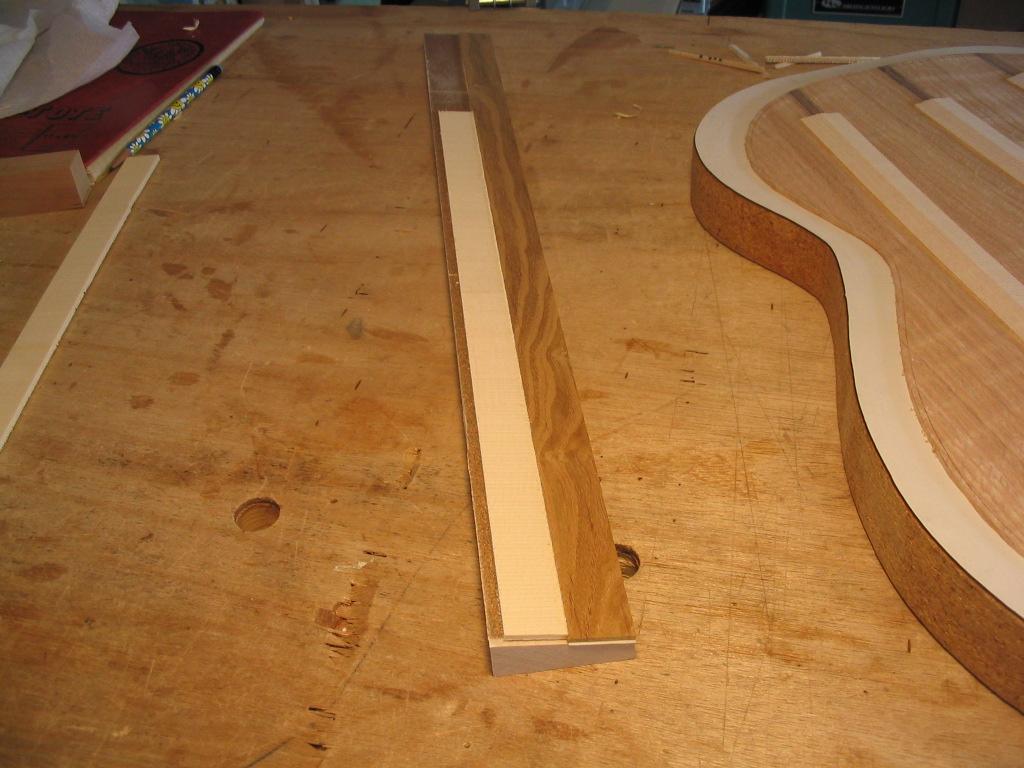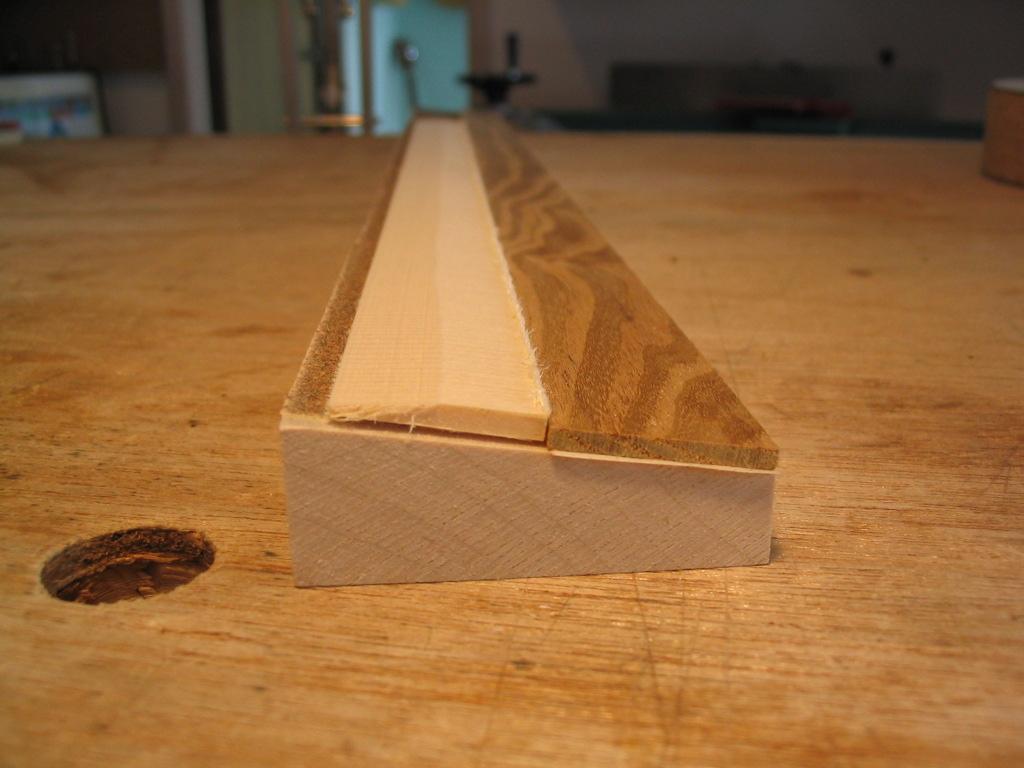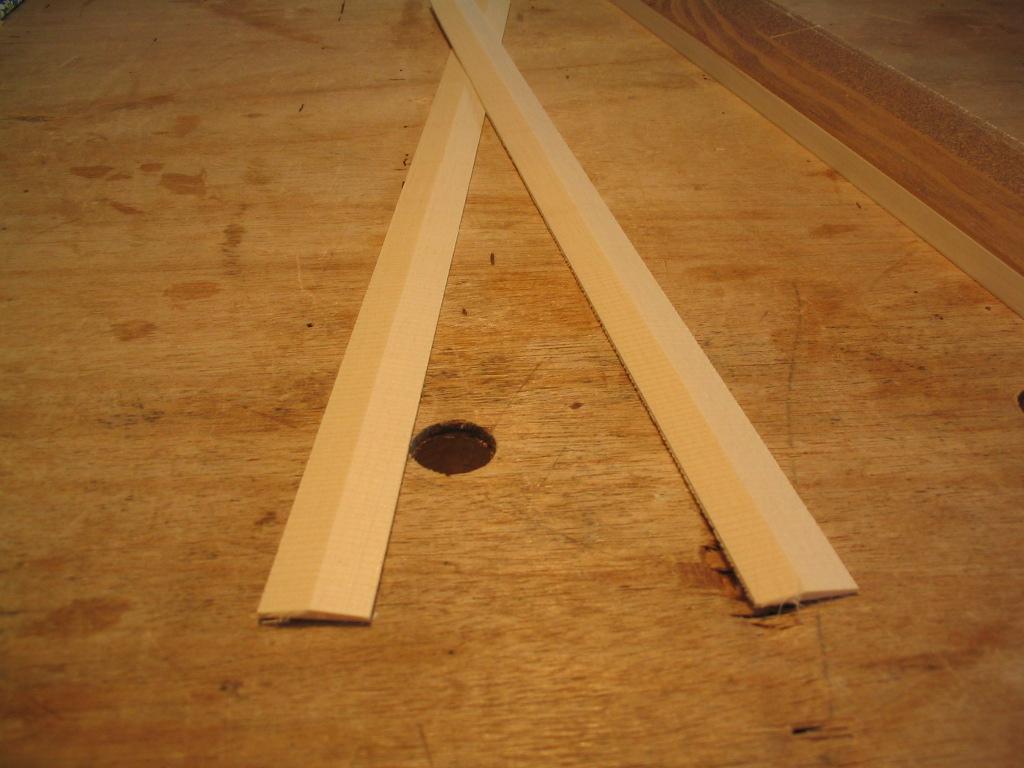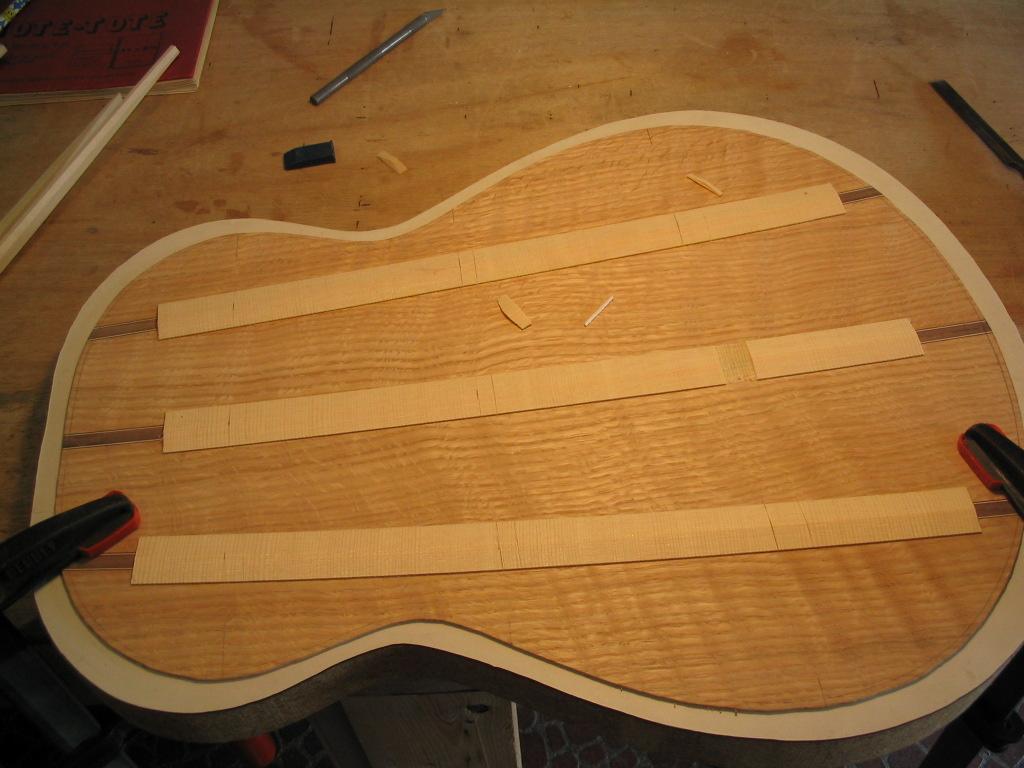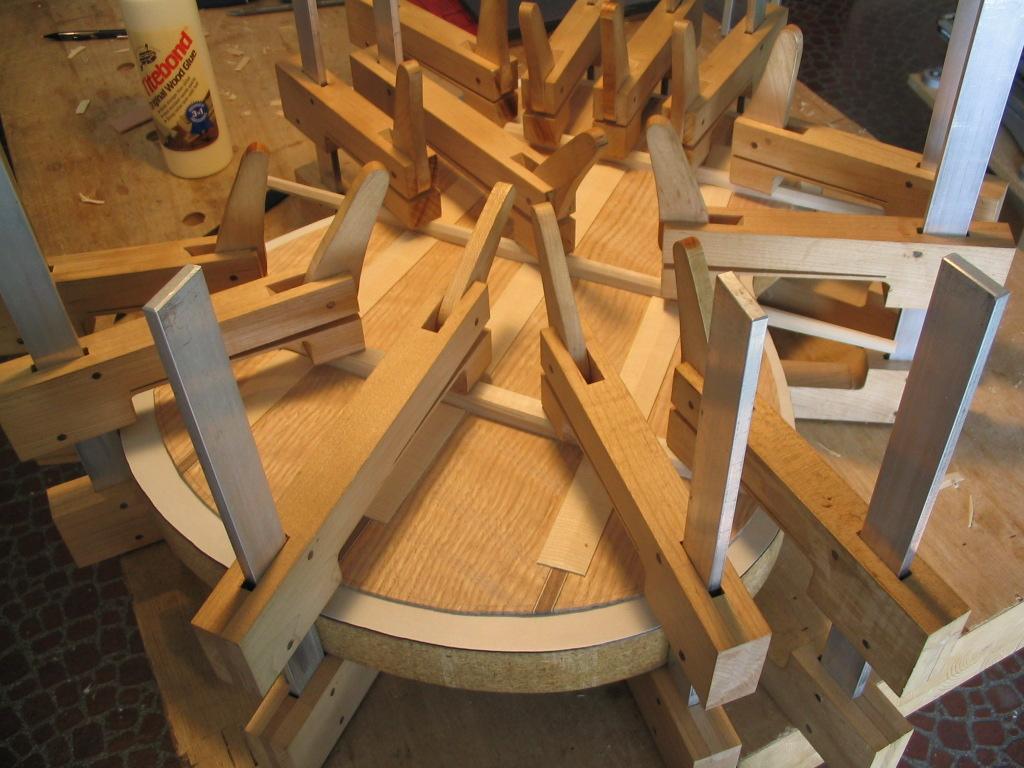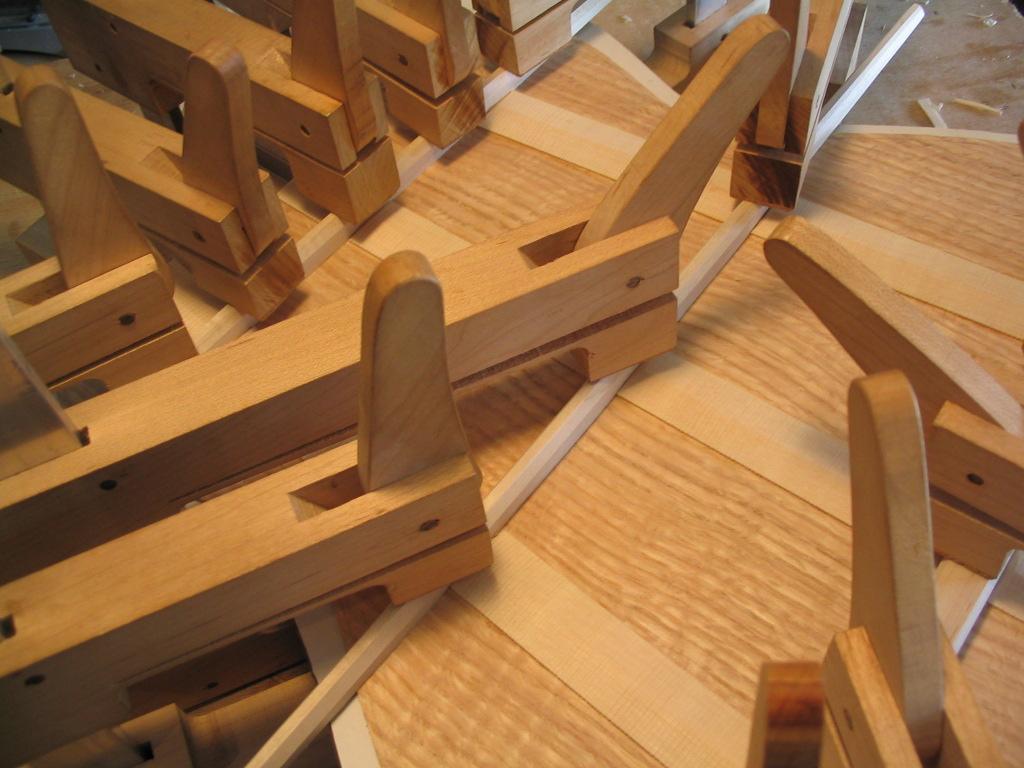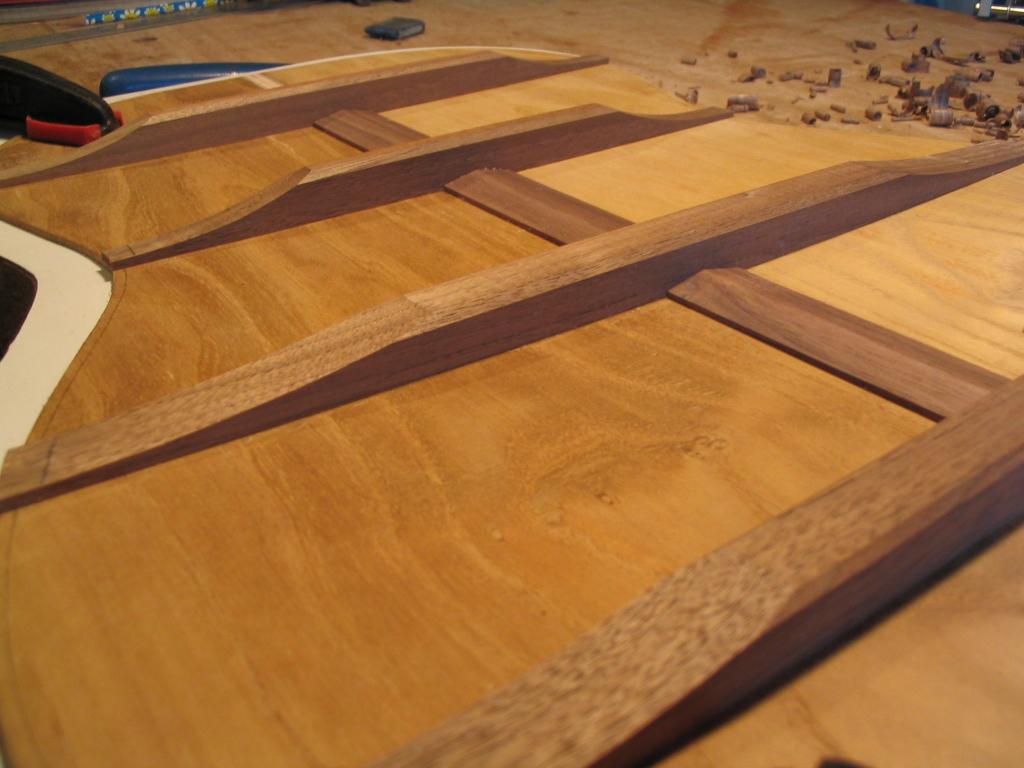


Previous Index Next
Back Bracing
The back plate next has reinforcement strips glued over the glue
joint(s). These strip are made from cross-grained spruce, cut from
leftover top material. I usually make them between 3/4" and 1" wide.
The strips are tapered so they are slightly peaked along their center
line. This is easily done by hand, or by running the strips through the
thickness sander on a tapered carriage. The carriage is shown in the
photos below with one of the strips on top.
After being run through the sander twice, the strip gets the desired peak. Below, the strip after the first pass.
The strips can next be glued over the seams in the guitar back. The
back shown is a four-piece back, so it has three seams. Since the back
is to be arched, the strips are glued on while the back is on its
arched workboard, and thus an arched clamping caul is used. Since the
center strips are peaked, the clamping caul has narrow cork strips
glued to its outside edges so it puts pressure on the outside edges of
the reinforcement strips.
The back with attached reinforcement strips is shown below.
The reinforcement strips must now be notched so the back braces can be
glued. Note that the back braces are made in the same way as the top
braces, being arched in the same fashion. My dimensions for back braces
are usually about 5/16" wide by 1/2" high for the narrow braces at the
upper bout, and 5/8" wide by 7/16" high on the lower bout. The guitar
shown uses just three back braces; I've also made guitars with four
braces. The material for these braces in the photographs is maple; I've
also used walnut, mahogany, and spruce. The material used doen't seem
to be critical to the instrument's tone.
The brace positions are marked using a ruler and square, and the
reinforcement strips are scribed with an Xacto knife on both sides of
each brace.
The material between the scribe marks is removed with a chisel.
The braces are now glued to the back, with the back laid atop the arched back workboard.
When the glue on the braces has dried, the protruding ends can be cut
flush with the edge of the body profile on the back. The ends of the
braces are then tapered to about .100" at their ends, with the taper
beginning 3" or so from the ends. Note that this back use 4 braces
instead of 3 as illustrated above, and uses walnut rather than soft
maple as the brace material.
The brace ends are then trimmed so
they end the thickness of the sides from the body profile line on the
inside of the back (recall that the back was cut about 1/8" bigger all
around).
Previous Index Next
Comments/questions: jsevy@cs.drexel.edu
